
"I really want to keep on shaking things up" says Maarten Baas
Scorched furniture, theatrical clocks and an indoor circus are among the projects that Dutch designer Maarten Baas presents in his first retrospective, at the Groninger Museum. In this exclusive interview, he explains why taking risks has been crucial to his success.
"I've always felt like that's my unique selling point – I have to cross new borders, try new things and discover new possibilities," Baas told Dezeen. "I will not lean back on a certain technique or a certain way of working."
"I really want to keep on shaking things up. It's not always a very nice way of working – it's tiring and stressful. But it's the only way I can motivate myself."
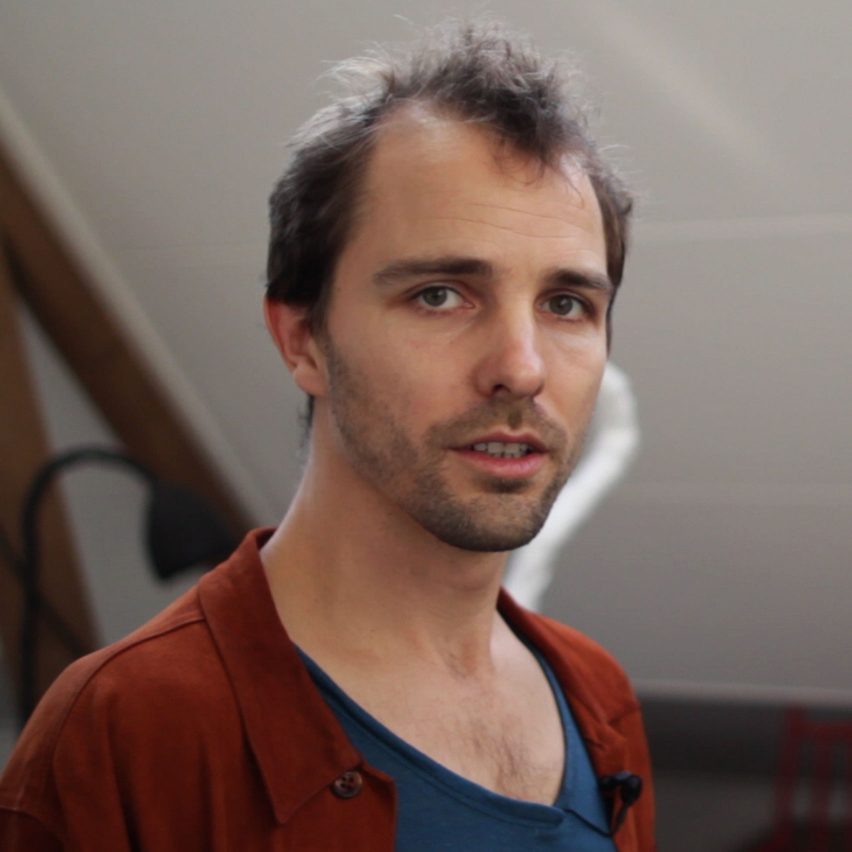
Baas graduated from Design Academy Eindhoven in 2002, and found immediate fame with his Smoke project, a collection of burnt furniture. It led to a partnership with Dutch furniture brand Moooi, as well as a solo exhibition at Moss gallery in New York.
"It was an immediate breakthrough actually," he said. "I don't know many other things that have been so overwhelmingly successful right from the beginning."
From then onwards, the designer has focused on realising as many of his ideas as possible, rather than capitalising on his commercial successes. This has resulted in a broad spectrum of designs, including "childish" chairs covered in clay and shell-inspired cabinets.
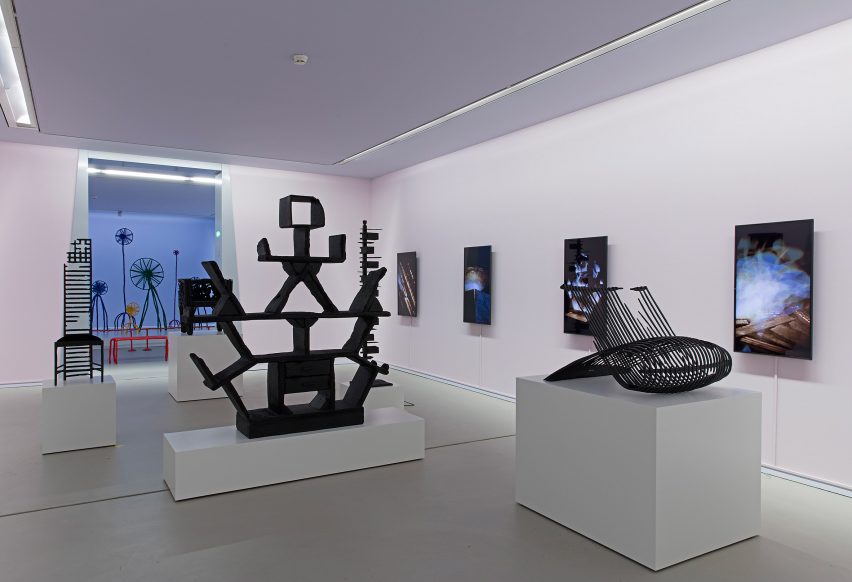
Baas said his ideas are not about experimenting with materials and techniques. He instead wants his designs to tell stories.
"I have always seen my products as part of a set design, a decor actually," he said.
"I never start with a technique or something like that, I always go from a story that I want to tell, or a picture that I have in my mind. I then find the materials and the techniques to actually make it."
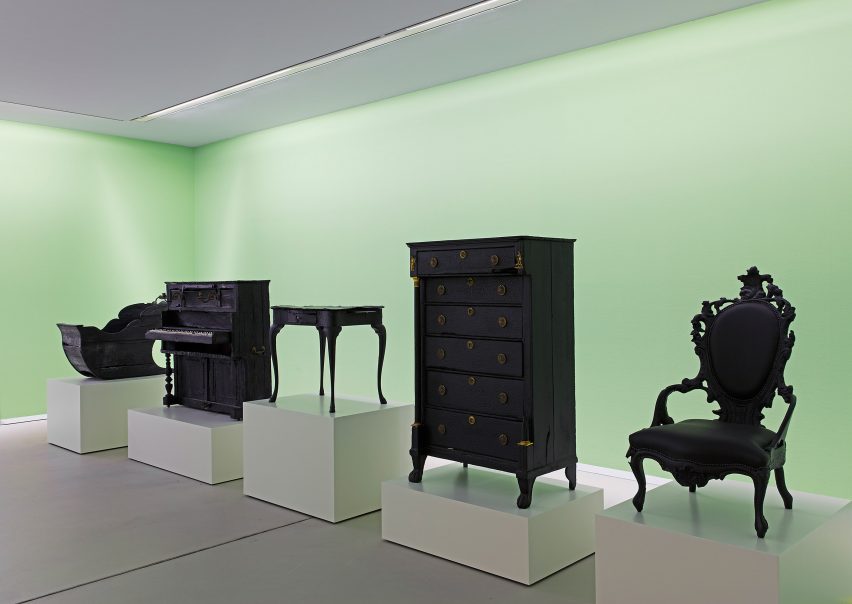
With his first retrospective, called Hide and Seek, Baas hopes to show how his projects represent the different sides of his character, that he considers himself both an exhibitionist and a recluse.
"Throughout my career, I have used quite different ways of expressing myself," he said. "Sometime I am very flamboyant and outgoing. And on the other hand, I can be very introverted."
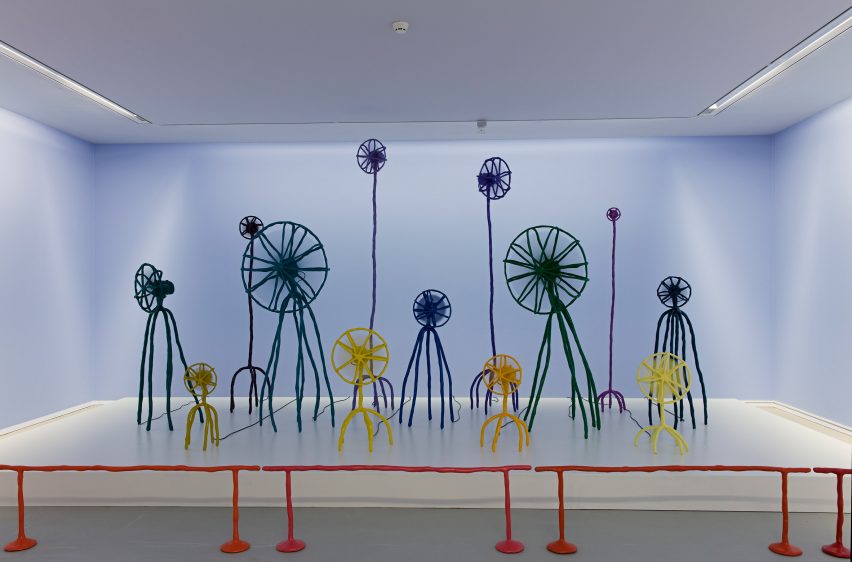
Hide and Seek is on show at the Groninger Museum in Groningen, the Netherlands, until 24 September 2017.
Dezeen spoke to Baas at a preview for the Groninger exhibition, held in London at the Carpenter's Workshop Gallery. Read the full interview below:
Amy Frearson: Tell me about your latest show, Hide and Seek, at the Groninger Museum.
Maarten Baas: It's really an overview of everything I've done so far. There is a selection of all main concepts, and every room contains a different concept. So there's a room with the Smoke furniture, a room with the Clay furniture, a room with my circus – Baas Is In Town – and so on.
Amy Frearson: Why did you name the exhibition Hide and Seek?
Maarten Baas: Because I'm always seeking new things, but I'm also hiding by playing different roles. Throughout my career, I have used quite different ways of expressing myself. Sometime I am very flamboyant and outgoing. And on the other hand, I can be very introverted.
The circus was a form of hiding in that sense, because I was acting as if I was a circus director, so I wasn't myself.
But I'm also literally hiding often! For instance, I've been not in Milan for a couple of years. And some of my designs are a way of hiding too, like the Carapace cabinets. Carapace is actually the shell of a turtle or a beetle. So they are a symbol of me going back into myself and being protected from the outer world – including the Dezeen website!
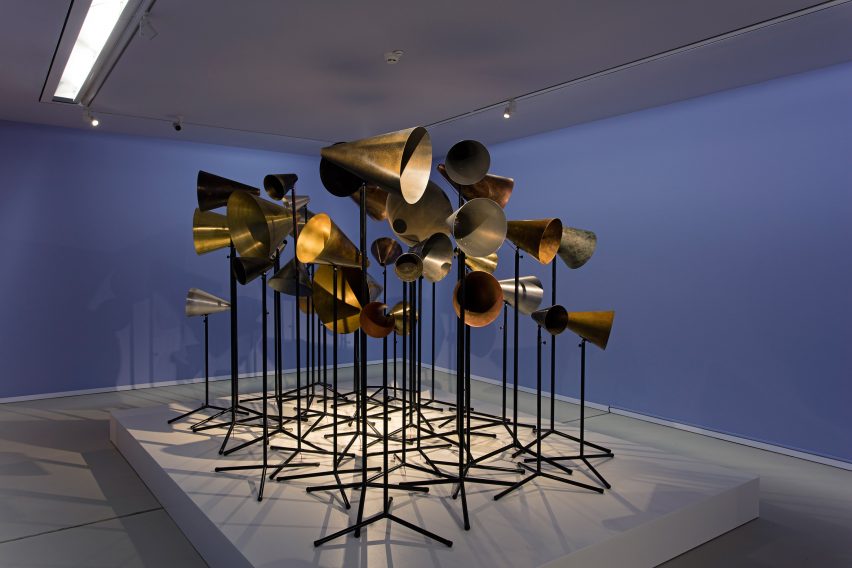
Amy Frearson: Let's talk about some of the designs in the show, starting with your graduation project, the Smoke furniture. What were the ideas behind that collection?
Maarten Baas: It was 15 years ago now, the first Smoke piece. It was an immediate breakthrough actually. I don't know many other things that have been so overwhelmingly successful right from the beginning.
But it was hard work at the time, just making it practical. It's nice to have exhibitions all over the world and good clients buying the pieces, but I didn't even have a workshop! I didn't have a car!
Amy Frearson: So straight after graduation you were getting some incredible commissions?
Maarten Baas: Yes, and I didn't even know how to make an invoice! It's great to be in a position where you can get other people to do things for you, but you still need to find those people and create that network.
So it was quite an explosive start and I was busy all the time. But in my head, creatively of course, I was further already. I wanted to step forward, I wanted to move to the next chapter. But there simply wasn't time in the first two or three years.
Amy Frearson: So, when you finally found the time to move forward, what was the next step?
Maarten Baas: It was the Hey Chair, Be A Bookshelf. It was the first time I was able to do something other than Smoke furniture for three years.
Amy Frearson: You must have been itching to do something new?
Maarten Baas: Yes! With Smoke I was able to do other things – like the design classics I did with Moss – but I wanted to move ahead, to experiment with a kind of naivety, a very pure, almost childish way of working. It was an in-between step that of course developed into the Clay furniture.
I presented the Clay furniture in Milan, and that was actually a very vulnerable moment for me. I didn't know what to expect, and I didn't know there was going to be a lot of attention on me. And it was quite a step to be showing these clumsy chairs.
Nowadays it's normal to come up with these kind of things, but back then it wasn't that normal to clay a chair, you know?
But it went well and I really felt that I could trust my intuition after that. It was a very important moment for me. Smoke opened the door, so to say, and Clay was me entering the room and feeling confident.
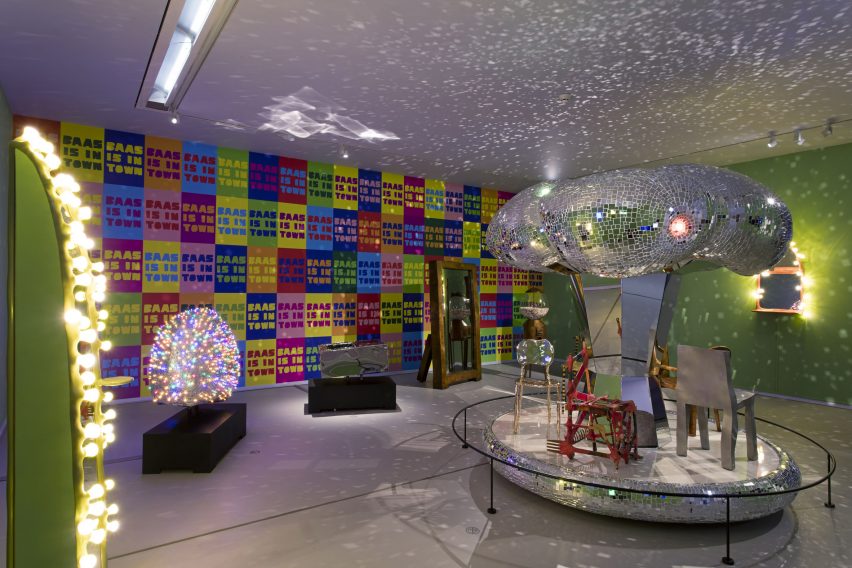
Amy Frearson: Did the way you worked as a designer change after that?
Maarten Baas: The way of working had to change of course – I met Bas den Herder, who has been my production partner ever since. So while in the first few years I'd had to do everything myself, moving much slower than I wanted to, I then had a team of workers led by Bas to make all the ideas that I had in my mind.
It was actually around that time that [Dezeen editor-in-chief, and former Icon editor] Marcus Fairs first came to visit us! That was one of my first big interviews with an international magazine.
So after that, content-wise, I could do more and more of the things that I had always planned to do, like working with actors, taking a more theatrical approach.
I have always seen my products as part of a set design, a decor actually; that's always the starting point in my work. I never start with a technique or something like that, I always go from a story that I want to tell, or a picture that I have in my mind. I then find the materials and the techniques to actually make it.
It's not really design, it's not really art, and it's not really theatre. It's somewhere I can create my own spot to do the things that I do.
Amy Frearson: Has taking risks become a big part of your design practice?
Maarten Baas: I force myself to keep on doing that actually, to run those risks. The first time I did the Clay furniture it was a very big risk. I put all the money I had into it and I didn't know if anything would come out of it.
And a couple of years ago, when we did the circus in Milan, I felt like there was a risk it could end my career, that it was a ridiculous plan. We did a tour through Ventura Lambrate with a megaphone, and afterwards I said to the guys: "I'm afraid in the last 10 minutes we've ruined 10 years of hard work!" I thought I'd made a fool of myself.
When you are older, when you have more responsibilities – your own house, a team of people who work for you – then it's very tempting to think: OK, now I should calm down a bit, milk the cow a little bit, don't take risks anymore.
But I've always felt like that's my unique selling point – I have to cross new borders, try new things and discover new possibilities. I will not lean back on a certain technique or a certain way of working.
And I purposely kept my company very small so that I could keep on running those risks. If I had taken on 50 employees, I would have needed to feed them all, and that would have meant making more commercial products.
Amy Frearson: So even though you're doing a retrospective, there's no chance of you slowing down? We're still going to see plenty more new ideas from you?
Maarten Baas: I really want to keep on shaking things up. It's not always a very nice way of working – it's tiring and stressful. But it's the only way I can motivate myself.
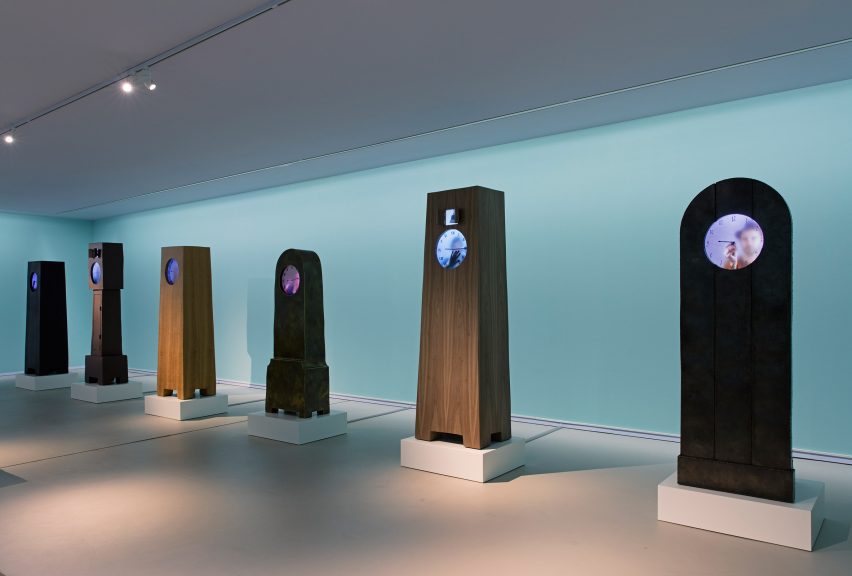
Amy Frearson: Let's also talk about the clock projects, which seems to have been an ongoing fascination for you. What is is about time that interests you?
Maarten Baas: You know, ever since I made those clocks I've been asked the most philosophical questions about time!
I don't really have the answers to those questions, it's just a form of expression for me. I feel intuitively that I'm onto something that makes sense, that relates to essential things.
We are all here for approximately 80 years, so in relation a minute is quite a short period of time, but 10 years is quite a long period of time, because it's a significant part of our life. I like that idea.
It was one of the things I thought about when I made the Tree Trunk chair. I, on purpose, made a chair that takes very long to create: 200 years. You think that's a long period, but only because it is in relation to a human life.
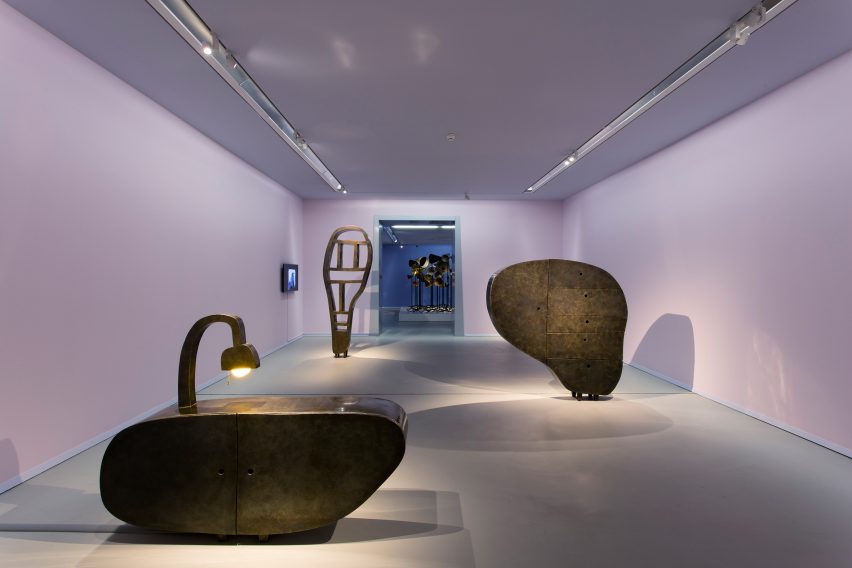
It's the same thing with the clocks – a physical man makes the time and, for every minute that he wipes away, a minute has gone. But he can make a new hand for the clock.
I think everybody has ideas about time. Some people just feel it, other people write about it, and I make things. But it's not that I have a fascination with time, I just make it because I feel it should be made and it makes sense.
Amy Frearson: And can you tell me about your latest collection, Close Parity?
Maarten Baas: They're all just sketches that have been extruded. So they are very very two-dimensional actually, but they're all standing on only two legs. With a lot of weight in the middle, we could balance it.
It's a very naive sketch, so naive it couldn't stand gravity actually. It only works two-dimensionally on the paper as a doodle, but now we've really made it physical.
In this movie we made in 2014, Baas discusses some of his designs in greater detail
Photography is by Lisa Klappe.